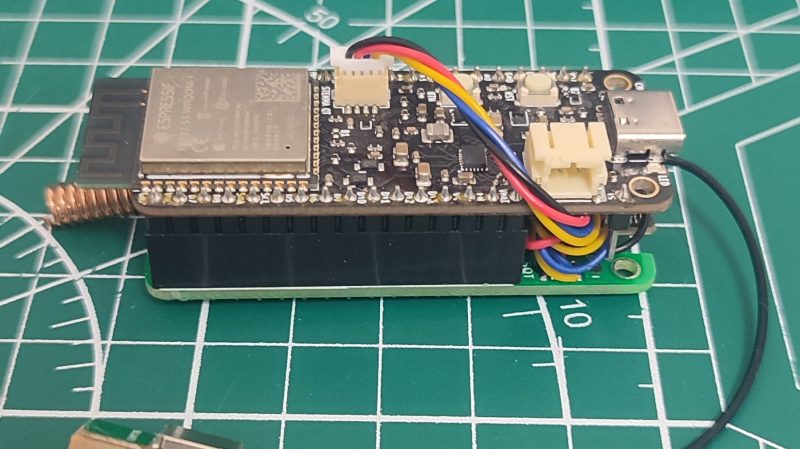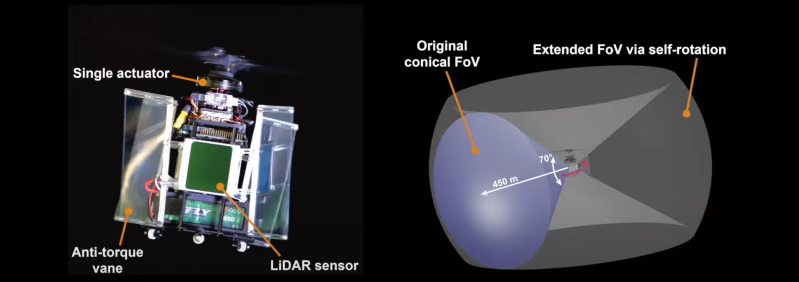- 0 replies
- 155 views
- Add Reply
- 0 replies
- 331 views
- Add Reply
- 0 replies
- 696 views
- Add Reply
- 0 replies
- 713 views
- Add Reply
- 0 replies
- 511 views
- Add Reply
Tiny LoRa GPS Node Relies On ESP32

By Lurker,


Sometimes you need to create a satellite navigation tracking device that communicates via a low-power mesh network. [Powerfeatherdev] was in just that situation, and they whipped up a particularly compact solution to do the job.
As you might have guessed based on the name of its creator, this build is based around the ESP32-S3 PowerFeather board. The PowerFeather has the benefit of robust power management features, which makes it perfect for a power-sipping project that’s intended to run fo
Single Rotor Drone Spins For 360 Lidar Scanning

By Lurker,


Multiple motors or servos are the norm for drones to achieve controllable flight, but a team from MARS LAB HKU was able to a 360° lidar scanning drone with full control on just a single motor and no additional actuators. Video after the break.
The key to controllable flight is the swashplateless propeller design that we’ve seen a few times, but it always required a second propeller to counteract self-rotation. In this case, the team was able to make that self-rotation work so that they coul
Blue Marble Geographics Releases Global Mapper v26.0 with New Deep Learning Image Analysis in the Global Mapper Insight and Learning Engine (Beta)

By Lurker,
The fall update to Global Mapper includes numerous usability updates, processing improvements, and with Pro, beta access to the Global Mapper Insight and Learning Engine which contains deep learning-based image analysis tools.
Global Mapper is a complete geospatial software solution. The Standard version excels at basic vector, raster, and terrain editing, with Global Mapper Pro expanding the toolset to support drone-collected image processing, point cloud classification and extraction, and
ESA releases new strategy for Earth observation

By Lurker,
Responding to the escalating threats from climate change, biodiversity loss, pollution and extreme weather and the need to take action to address these threats, this forward-looking strategy outlines a bold vision for Earth science through to 2040.
By leveraging advanced satellite-based monitoring of our planet, ESA aims to provide critical data and knowledge to guide action and policy for a more sustainable future.
ESA’s Director of Earth Observation Programmes, Simonetta Cheli, said,
Comprehensive model uses airborne LiDAR data to predict walking travel times with unprecedented accuracy

By Lurker,
You're a hotshot working to contain a wildfire. The conflagration jumps the fire line, forcing your crew to flee using pre-determined escape routes. At the start of the day, the crew boss estimated how long it should take to get to the safety zone. With the flames at your back, you check your watch and hope they were right.
Firefighters mostly rely on life-long experience and ground-level information to choose evacuation routes, with little support from digital mapping or aerial data. The t
-
Forum Statistics
8.7k
Total Topics43.4k
Total Posts


